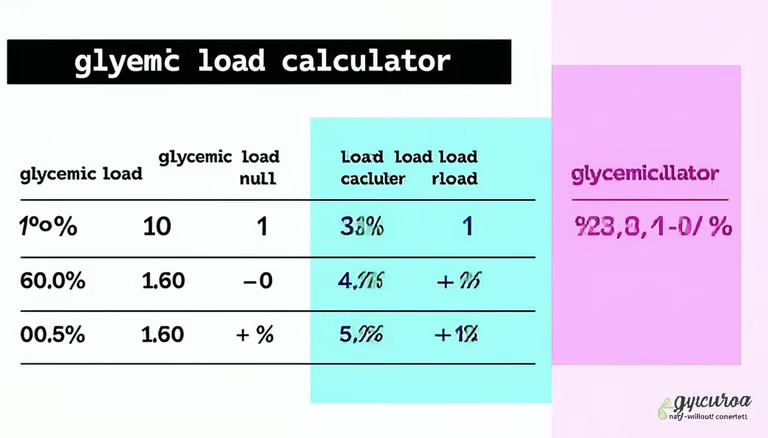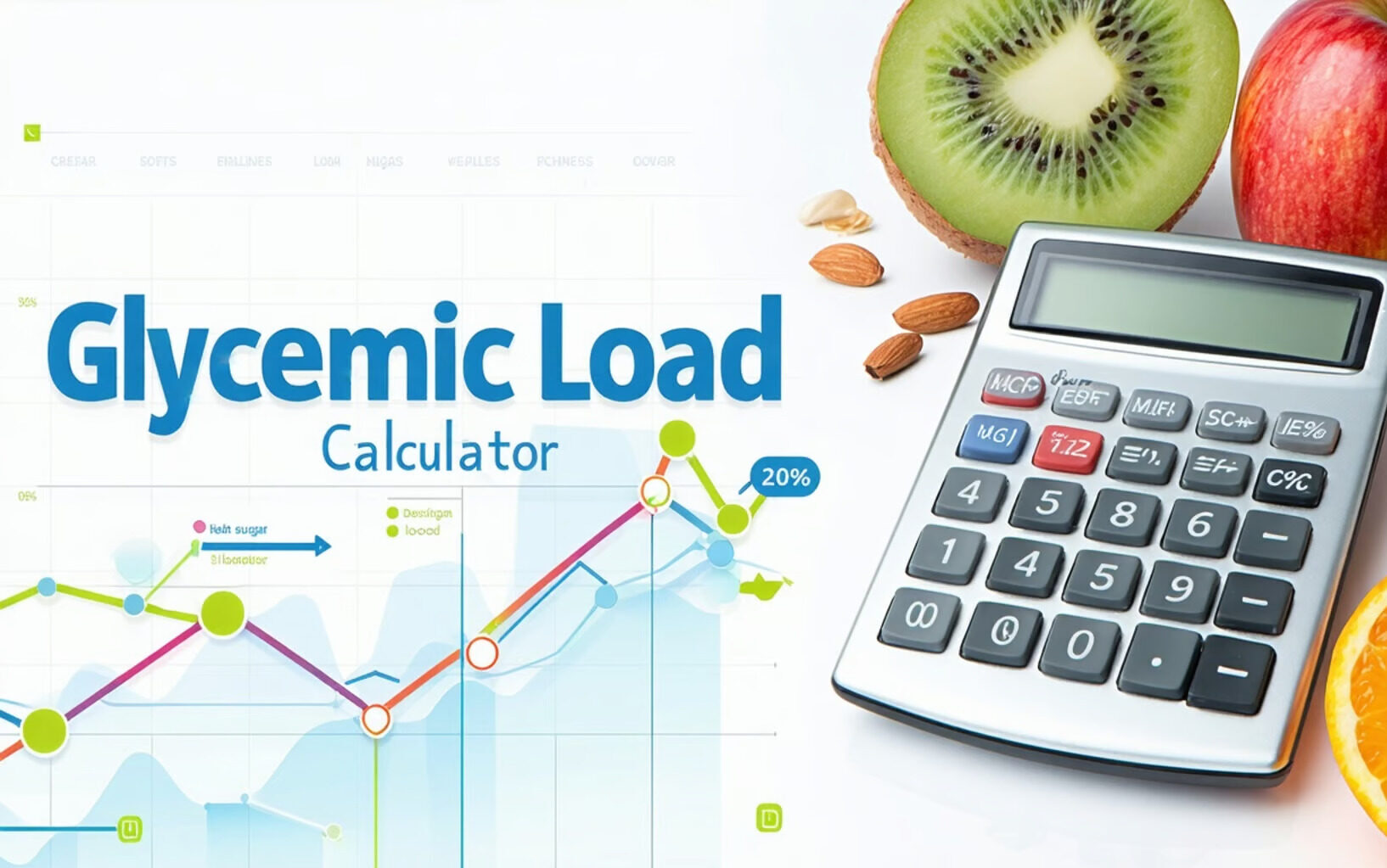The Benefits of a Glycemic Load Calculator for Our Health
Discover how a glycemic load calculator can boost our health by managing blood sugar and reducing diabetes risk!
Understanding Glycemic Load

What is Glycemic Load
Glycemic Load (GL) is like our secret weapon in keeping blood sugar on an even keel. It’s a handy tool that blends two things: the glycemic index (GI) and the carbs in the food we’re munching on. This combination gives us a down-to-earth view of how what we’re eating shakes up our blood sugar levels.
Making sense of GL is almost as easy as pie:
[ GL = \frac{(GI \times \text{amount of carbs per serving})}{100} ]
This nifty formula shows us which foods give our blood sugar a gentle nudge or a big old shove.
Importance of Glycemic Load Calculation
Cracking the code of Glycemic Load is all about keeping our blood sugar stable and dodging the risks of type 2 diabetes. By weaving the GL into our daily choices, we get a sharper picture of what’s happening with our diet.
Here’s why GL matters:
- Blood Sugar Smarts: Calculating GL helps us steer clear of those mighty sugar spikes, a lifesaver for folks managing diabetes.
- Diet Decisions: Knowing a food’s GL means we can pick n’ choose wisely, knowing how much to pile on our plates.
- Health Perks: Playing with a glycemic load calculator teaches us which bites might be better for us versus the ones to skip.
Check out this table to see the GL math at work:
| Food Item | Glycemic Index (GI) | Carbs per Serving (g) | Glycemic Load (GL) |
|---|---|---|---|
| Apple | 40 | 15 | 6 |
| Brown Rice | 50 | 30 | 15 |
| White Bread | 70 | 25 | 17.5 |
When we keep tabs on the Glycemic Load from our meals, we take the driver’s seat in our health journey. For a deeper dive into the numbers, tools like the estimated average glucose calculator and homa-ir calculator make it easy. Plus, adding in a diabetic macro calculator can help us keep our dietary adventures on track.
Calculating Glycemic Load
Glycemic Load Formula
Glycemic Load (GL) is our trusty sidekick in managing blood sugar. It’s like the Glycemic Index (GI) but with a bit more street smarts—it doesn’t just care how fast carbs hype you up, but how much of them you’re devouring too. This means when you’re being mindful of your food choices, GL gives the real scoop.
Here’s the simple way to figure out that GL number:
[ \text{GL} = \frac{\text{GI} \times \text{amount of carbohydrate (in grams) per serving}}{100} ]
Picture it:
- Got a glass of skim milk? You’re looking at about 12 grams of carbs, GI sitting at 46.
- Plug it into our formula: ( \text{GL} = \frac{46 \times 12}{100} \approx 5.52 )
Armed with this formula, we’re all set to line up meals that keep our blood sugar levels steady. If you’re into crunching numbers for good measure, check out our estimated average glucose calculator.
Examples of Glycemic Load Values
Getting familiar with GL numbers of regular foods makes planning meals easier, especially if you’re aiming for a diet that’s gentle on the glucose spikes. Peep at these popular munchies and their GL scores:
| Food | Serving Size | Carbs (g) | Glycemic Index (GI) | Glycemic Load (GL) |
|---|---|---|---|---|
| White Rice | 1 cup (150g) | 45 | 72 | 50 |
| Rolled Oats | 1 cup (230g) | 21 | 48 | 10 |
| Baked Potato | 1 medium (173g) | 37 | 85 | 25 |
| Apple | 1 medium (182g) | 25 | 40 | 10 |
| White Bread | 1 slice (25g) | 12 | 85 | 10.5 |
Keep these tips in your back pocket:
- Go for low GL chow like apples and oats.
- Be wary of the carb bombs—like white rice and potatoes.
- Mix it up with a smattering of low GL goodies to smooth out that sugar rush (Glycemic Index Guide).
For more nifty hacks to keep that intake in check, check out our piece on the diabetic macro calculator.
Impact of Glycemic Load on Health
Ever thought about how your food choices mess with your blood sugars? Understanding glycemic load (GL) is like having a cheat sheet for maintaining blood sugar balance and dodging diabetes.
Blood Sugar Levels
So, what’s the skinny on glycemic load (GL)? Basically, it’s about how carbs play around with your blood sugar. Unlike its fussy cousin, the glycemic index (GI), which just checks how fast the carbs crash your sugar party, GL takes both speed and carb amount into account. This makes the glycemic load calculator a top-notch tool for really figuring how foods affect those sugar levels (Glycemic Index).
Here’s what happens: Your body gobbles up carbs, breaking them into glucose, adding a bit of sugar rush. High GL foods give you a sky-high sugar high, while low GL foods are more about the slow burn. Stick to low GL foods, and you’re less likely to experience those blood sugar yo-yos.
Let’s peek at how some common foods measure up on the GL scale:
| Food | Serving Size | Glycemic Load |
|---|---|---|
| White Rice | 1 cup | 43 |
| Apple | 1 medium | 6 |
| Spaghetti | 1 cup | 20 |
| Broccoli | 1 cup | 1 |
Keeping your blood sugar on an even keel keeps you feeling good and moving through your day with extra zip. For folks watching their sugars because of diabetes, using a gmi to a1c calculator is a real game-changer.
Diabetes Risk
Research shows foods with a high GL can lead to a higher chance of getting type 2 diabetes. Studies, like those from Shanghai Women’s Health Study and the Black Women’s Health Study, highlight this link between high GI diets and the rise of type 2 diabetes (Wikipedia).
See, noshing on high GL foods means constant sugar spikes and insulin floods, which our bodies don’t love over time. This pattern can beef up insulin resistance, a major player in type 2 diabetes. Cutting back on high GL foods could seriously shrink your diabetes risk and help manage it better.
Nutritionists say, seriously consider both GI and GL when you’re planning meals. This clever combo helps avoid those blood sugar swings, essential for those juggling diabetes. Need tailored diet tips? Check out the diabetic macro calculator.
Understanding what GL means for your health gives you the power to make smarter food choices. With low GL foods in your diet, managing blood sugar gets a lot easier, slashing your diabetes risk and boosting your health mojo. Curious for more glycemic load calculator tips? Dive into our piece on the estimated average glucose calculator.
Management
Implementing a Low Glycemic Load Diet
Switching to a low glycemic load (GL) diet can work wonders if you want to steady your blood sugar levels or keep type 2 diabetes at bay. The whole idea is to dodge those pesky blood sugar spikes by munching on foods that don’t give your blood sugar a rollercoaster ride. Instead, these foods break down nice and slow, which is the ticket (Glycemic Index Guide). It’s about helping you win in the weight loss game, keeping your blood sugar on an even keel, and cutting down on how much insulin you need to get by.
Here’s a quick cheat sheet for analyzing glycemic load:
| GL Value | Description |
|---|---|
| 1-10 | Low GL |
| 11-19 | Medium GL |
| 20+ | High GL |
And let’s check out some food examples for some real-world context:
| Food | GL Value |
|---|---|
| Apple (medium) | 6 |
| Brown Rice (1 cup cooked) | 16 |
| White Bread (1 slice) | 10 |
| Soft Drink (12 oz) | 14 |
By sticking to low GL foods, you’re essentially giving your energy levels a steady sail and nipping erratic blood sugar surges in the bud (Everyday Health).
Strategies to Lower Dietary Glycemic Load
If you want to lower that glycemic load in your diet, these handy tips can make all the difference to your day-to-day energy and long-term health. Here’s the lowdown:
Increase Whole Grains:
- Go for whole grains like brown rice or oats. They break down at a turtle’s pace, which is a good thing for keeping blood sugar levels on a leash.
Nuts and Legumes:
- Think almonds or chickpeas. They come with protein and fats that give your blood sugar a steady ride.
Non-Starchy Vegetables:
- Veggies like spinach, broccoli, and cauliflower pack fiber and low carbs. Perfect for a GL diet that works.
Limit Starchy Foods:
- Pull back on the starches. Popcorn, potatoes, white rice, and bread belong to this crew that hikes your GL faster than you’d like.
Avoid Sugary Foods:
- Say no to cookies, cakes, and soft drinks, ‘cause they’re high GL culprits.
And hey, if you’re into tracking and tweaking your diet, check out a glycemic load calculator for some easy-peasy monitoring. This hands-on approach isn’t just a diet; it’s a lifestyle change that could steer your health in a better direction if you’re managing diabetes or just being proactive with your health.
Get a handle on these tactics, and you’ll get a smooth combo of foods in your life. For more guidance, hit up our resources like the diabetic macro calculator and homa-ir calculator for some extra savvy planning.
Image Credit







